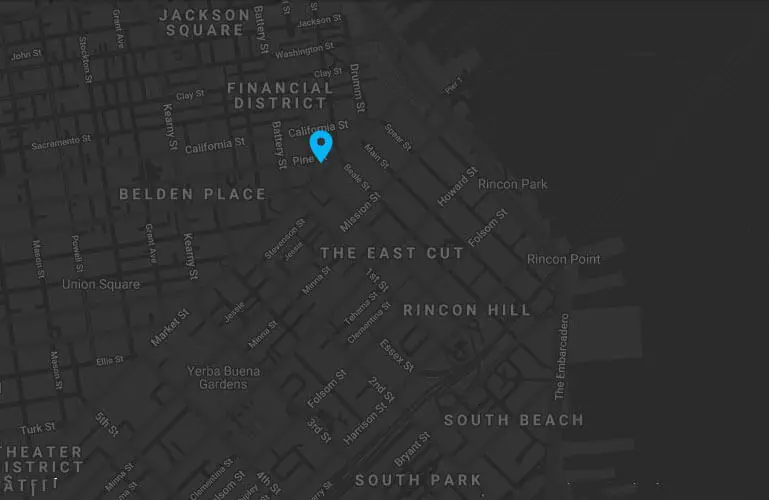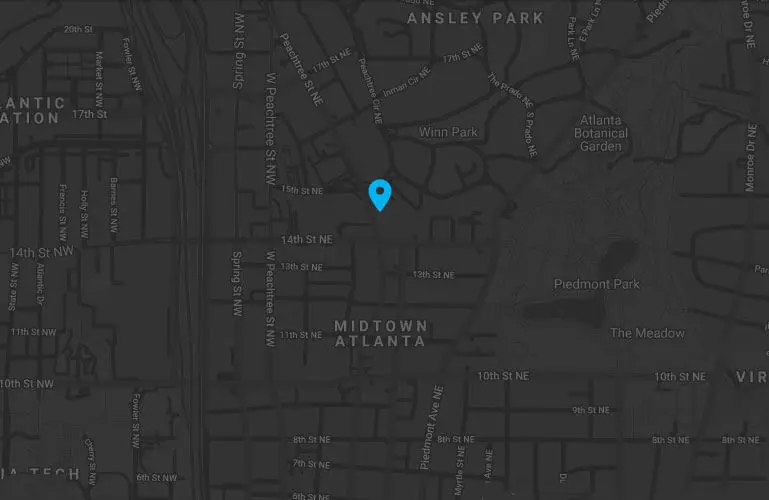Website Redesign. What You Can Expect.
So, you say you’re ready for a website redesign? But will you get a next-gen evolution of your website experience or lipstick on a pig?
Don’t worry, I will explain.
When it comes to website redesign, most companies and organizations fall short of taking the steps necessary to create a truly engaging and effective website experience. This may not be their fault, as they seek the expertise and guidance of their website designer who, unfortunately, may be looking for the quickest way to get your project out the door and get paid. In fact, most website redesigns basically entail taking an existing website and without much thought putting on a fresh can of paint over a rotting structure, resulting in a website redesign that inherits the same fundamental issues as the old website. Lipstick on a pig.
Website redesign methodology.
An intimate experience.
I have decided to share our methodology for website redesign so that the folks unfamiliar with the process may gain confidence. Many of you may also be unsure or even apprehensive about the investment of cost, time and resources necessary to create a truly effective web presence. Hopefully, this will de-mystify some of the black box secrets web design agencies hold closely.
Our methodology has been a work in progress for over 20 years and is applied to every website we create, large and small, regardless of industry and functional requirements.
Here is an outline of our 10-step process:
- Discovery workshop
- Content inventory & migration
- Information architecture
- Design & creative services
- Front-end / Responsive development
- WordPress CMS integration
- Search engine optimization
- Web standards-compliance
- QA testing
- Deployment
We will cover each step of this process later in the article. But first, let’s take a step back and understand your motivations for investing in a website redesign.
Website redesign methodology.
How to prepare for a website redesign.
Before you begin the website redesign process, here are some considerations that will help you come to the right balance between objectives, requirements and cost:
Goals
Before you begin your website redesign, it is important that you take the time to establish some goals. Ask yourself these questions: Why are you choosing a website redesign at this time? What are you trying to accomplish with your website redesign? What does the website redesign need to do to achieve your goals? What are the key metrics that will determine the success of your website redesign?
Time
How much of your personal or staff’s time are you willing to commit to the website redesign project? The greater the investment of human resources, the less cost associated with building the website. Bear in mind that in order to assume full website design and development responsibilities you or your staff will become the de facto designer, developer, marketer and IT department.
Audience
Who is your target audience and user personas (eg., business owner, marketing manager, IT manager, communications director)? What are their needs? What are their expectations for the website? How will your target audience be able to provide feedback on the website redesign?
Cost
How much are you willing to pay for your website redesign? Several factors, including organizational goals, project requirements, the level of customization, and quite honestly how much can you afford to spend will determine the cost of your website redesign.
Traffic
How are people finding your current website? Is it effective in generating conversions, which leads to acquisition? This is important stuff to know as with the new website we will be amplifying all of the existing traffic sources, which can include:
- Direct. People that type in your URL directly.
- Referral. Traffic that results from links on other websites that link to your website.
- Social. Traffic from social media platforms.
- Organic search. Traffic that results from search engines.
- Digital advertising. Traffic that results from paid ads, such as Google Ads.
Website redesign methodology.
The process.
Let’s begin the website redesign process:
1. Discovery Workshop
The engagement process begins with an onsite Discovery Workshop held with key stakeholders. The main focus for the workshop will be to determine the project’s technical, platform, budgetary and timeline requirements to their most accurate specifications in a collaborative and engaging environment. The purpose of this Workshop is to dedicate appropriate debate to the following key issues:
Website strategy
- Assessment of existing website
- Analysis of target audiences
- Best-in-class sites
- Management Interviews
- Content identification and strategy
- Creative discussion
Platform strategy
- IT interviews
- Project team interviews
- Recommendation on what technology to implement
- Assessment of support/maintenance requirements
Marketing strategy
- A set of preliminary search engine marketing recommendations
- An outline of several key metrics to be used for quantitative measurement of site effectiveness
Following the discovery workshop we create a project plan, which will include finalized project deliverables, timeline and cost specifics. The project plan is the primary reference document for benchmarking and adherence to quality guidelines and delivery timetables.
The following critical items are inclusive within the Project Plan:
- Discovery summary
- Content package
- Site objectives/business requirements
- Target audience
- Platform assessment/technology recommendations
- Functional requirements
- Assumptions
- Creative brief
- Acceptability criterion
- Timeline for milestones, tasks and launch
2. Content inventory & migration
Content will be reviewed and migrated into a content package to be used for the new website design, including page elements, titles, copywriting, title tags and meta descriptions to be used per page. Based on our findings in the discovery phase, we’ll identify SEO opportunities and make recommendations for a strategic approach for optimum audience reach. We also engage clients in the process of identifying key performance indicators and will present an Analytics Measurement Plan—ultimately used to measure success.
3. Information architecture / UX design
Next, we begin our website architecture phase where we create comprehensive documentation that includes a site overview, site outline, user-flow, and functionality specifications. This helps us all get on the same page about what is being built and what to expect once we get there.
We will make recommendations for improved User Experience, determine the levels of navigation that will be necessary to create effective user flow throughout all pages of the site and create interactive wireframes based on content and the approved navigation. Wireframes will be provided for the homepage, key landing pages and key detail pages. Each wireframe will include three states for desktop, tablet and smartphone.
4. Design & creative
Next up is the fun part: design concepting. Our 4-round design process begins with the home page and one or two interior pages, and proceeds to the additional pages needed to give you a full snapshot of the site design and functionality, including responsive (mobile and tablet) concepts.
- User Interface Design. Develop homepage design comps and one or two content pages and conduct internal brainstorm and review.
- Design Round 1 & 2. Revision round and approval of direction.
- Page Layout Design. Continue interface design and content layout for each unique page type.
- Design Round 3 & 4. Develop templates and style guide, present to client for sign-off. At each step of the process, we will review with you, getting your feedback, so we can move forward to the next round of design with full creative and directional confidence.
5. Front-end / Responsive development
Once the design concepts are approved, we will prep the files for responsive web design (all graphics built at 2x resolution for mobile & tablet devices) and send the HTML prototype templates to our programming team for implementation. We will get the site functioning to an Alpha version, which will allow us to import initial content and test for website functionality and ADA-Compliance.
6. WordPress CMS integration.
WordPress is an open-source content management system (CMS) that allows non-developers to administrate their website without having to have strong programming skills. There are countless CMS in the marketplace, but WordPress is the tool of choice for most web design agencies because it is powerful, intuitive to use, scalable and has the worlds largest support community.
7. Search engine optimization
Our SEO experts work closely with customers to increase awareness and visibility, leading to measurable results through search engines by optimizing their website organically and producing a technical, inbound and outbound SEO strategy. A comprehensive approach to SEO will lead to better results.
Our SEO services provide a total optimization solution for our customers. We help improve online brand visibility so that the website consistently and effectively connects with target audiences. We develop the content for the title tags, meta description tags and meta keyword for each page of the website.
8. Web standards-compliance
We quality test all pages of the new website design through the W3C validator, including the Federal Government’s ADA Section 508 Level AA compliance, which requires that all content be accessible to people with disabilities.
9. Quality assurance testing (QA)
We create a set of guidelines to follow while conducting quality assurance testing. The guidelines address editorial, graphics, and coding conventions. After the site has been built, it will be put through a rigorous post-production process. Finally, there will be a provision for user feedback, which can influence the ongoing maintenance of the site.
Areas to cover in quality assurance include:
- Content
- Spelling, grammar, mechanics
- All critical information is present
- Titles, headers, and navigation labeled correctly
- Graphics and layout
- Image quality
- Download time
- Alignment of elements
- Web-safe color accuracy
- Browser/Mobile compatibility
- Check on different platforms
- Check on different browsers
- Check on different desktop and devices
10. Deployment
After several weeks of collaboration and long hours, the website redesign is finally ready for deployment. The website has been fully tested and vetted on a private staging server that customers have access to. Once we get the green light by the customer we then migrate the website over to the live host for website redesign launch.
Website redesign methodology.
The tools.
Here is our list of project management, creative & analytics tools we use for website redesign:
Basecamp
Basecamp is a popular web-based project management platform. We like to use it for website redesign because it replaces the headache of mass emails going back and forth as discussion are created and maintained within the platform. Clients like Basecamp because it is easy to use and provides a very useful file repository. With Basecamp, we are able to log project hours, set tasks and track milestones.
Basecamp is a web-based project management suite which allows users to track milestones and tasks, share files and collaborate. Built on web standards such as HTML5 and Javascript, Active Collab is supported in all modern web browsers like Google Chrome, Firefox, Safari and Internet Explorer 8+.
Lucidchart
We use Lucidchart during the information architecture phase of the project. Lucidchart is a web-based architecture platform that allows us to create mind maps, flowcharts and wireframes, among other useful tools.
Cage
Cage is a simple online tool that allows designers and clients to share and manage creative work. With Cage, our design team post design compositions for the website redesign and customers can interact with each design by providing visual feedback to any part of the design. A customer can view the history of design revisions, allowing them to see the progress step-by-step. Once a design is approved, both teams can celebrate the achievement directly in Cage.
ClickTale
ClickTale is our choice for usability testing. Usability testing measures customer behavior and web analytics, providing both qualitative and quantitative measurements that can create a looping effect that will continue to improve the overall performance and like-ability of a website. ClickTail tools include recording users sessions and video playback, heatmaps, behavior diagnosis as well as traditional conversion analytics.
Google Analytics
Google Analytics is the default analytics tool for most web developers today. Google Analytics is a free online service offered by Google that provides useful website insights, including traffic, traffic sources, user demographics, user behavior and geography. Web developers will simply insert a line of code into the website and set up goals that will allow search engine optimization marketers to measure conversion and sales.
Website redesign methodology.
Know which questions to ask.
Now that you understand our methodology it’s time to take charge of your website redesign strategy. So let’s take a step back to begin the discovery process by defining questions you need to know the answers to:
- What is website redesign and what does it include?
- Why is redesigning my website important?
- What are the website redesign benefits?
- How often should I redesign my website?
- How do I plan for a website redesign?
- What is your website redesign UX process?
- What are the website redesign phases?
- How many unique pages will the new site have?
- How long does it take to redesign a website?
Website redesign methodology.
Conclusion
A successful website redesign should follow a proven methodology that takes a step-by-step and clearly defined approach with the process. With successful website redesign, the expectations are set clearly at the beginning, goals are stated, tools are introduced, tasks are assigned and a timeline that is agreed upon by both agency and client is agreed to.
If you are interested in working with us regarding your website redesign, then connect with us today and get access to testimonials from our previous clients so that you can be assured of the quality of our work. When you get in touch, we will listen closely to help develop your goals into achievable results. Everyone on our team is looking forward to bringing your project to life, so get in touch today and organize an initial discussion.
To find out how our web design experts can help you refine, revise or reinvent your online presence, call 888.938.8289 or email us at inquiry@deepblue.com.








